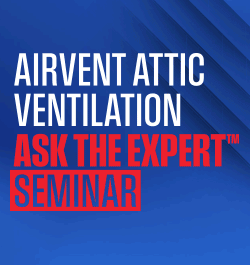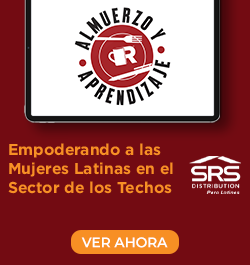OSHA clarifies who may attend workplace inspections

Although the amendment preserves certain protections for employers, it is important to understand how employers can prepare for this new style of OSHA inspection.
The Occupational Safety and Health Administration (OSHA) recently amended 29 CFR 1903.8(c) to clarify who may represent employees during workplace inspections. Because these amendments will go into effect on May 31, 2024 (which may be delayed due to expected legal challenges), employers should immediately begin preparing for the changes ahead.
The amendment is twofold. First, OSHA clarified that employees may be represented during workplace inspections by a fellow employee or a third party (i.e., a non-employee). Second, for a third party to act as an employee representative, their participation must be “reasonably necessary” to conduct an effective and thorough inspection.
Although the amendment preserves certain protections for employers, it is important to understand how employers can prepare for this new style of OSHA inspection.
Setting the stage for the amendments: OSHA’s letters of interpretation and recent litigation concerning employee representation
OSHA has issued numerous letters of interpretation concerning employee representation for workplace inspections – many of which have been challenged in court. One such letter was released in 2013, wherein OSHA answered the question of whether employees without a collective bargaining agreement could elect a union affiliate to act as an employee representative during a workplace inspection. In response to this question, OSHA explained that the union affiliate could be an employee representative, provided that the employees previously authorized this individual to act as their representative.
Three years after OSHA issued this letter of interpretation, the National Federation of Independent Business (NFIB) sued to challenge the letter, arguing that OSHA had exceeded its authority. Nat'l Fed'n of Indep. Bus. v. Dougherty, No. 3:16–CV–2568–D, 2017 WL 1194666 (N.D. Tex. Feb. 3, 2017). The United States District Court for the Northern District of Texas explained that OSHA’s statements were inconsistent with 29 CFR 1903.8(c) and that OSHA had effectively changed its regulation outside the confines of the notice and comment rulemaking process. Id. at 11.
The district court recognized that the letter “flatly contradicts a prior legislative rule as to whether the employee representative must himself be an employee.” Id. Nevertheless, the court ruled against the NFIB, finding instead that OSHA’s letter of interpretation was “a persuasive and valid construction of the Act.” Id. at 12. Therefore, the district court concluded that “the Act merely provides that the employee’s representative must be authorized by the employee, not that the representative must also be an employee of the employer.” Id.
OSHA eventually rescinded this letter of interpretation in 2017 and revised its Field Operations Manual to remove citations and references to the letter. In the years that followed, organizations on both sides of the issue began to lobby for change. It soon became apparent that OSHA needed to revisit the topic of employee representation during workplace inspections.
The amendment: Changes to come
The amendment makes two changes to 29 CFR 1903.8(c).
First, in response to the Northern District of Texas’ decision in NFIB v. Dougherty, the amendment clarifies that employees may select a fellow employee or a third party as their representative. For example, an employee may designate a union representative, employee-rights advocate, attorney, etc. as their representative. This means that third parties, who may have been precluded from OSHA inspections, can now access the workplace during the OSHA inspection.
Second, the amendment clarifies which traits a third party must possess to qualify as an employee representative. Indeed, the third party employee representative must demonstrate to the Compliance Safety and Health Officer (CSHO) that they have the “relevant knowledge, skills or experience with hazards or conditions in the workplace or similar workplaces, or language skills” to assist in the “effective and thorough physical inspection of the workplace.”
Preserving employer protections: The employer’s rights
Although the amendment will change how OSHA conducts workplace inspections, it is important to understand that the amendment preserves certain protections for employers. In particular, the amendment maintains at least three employer protections:
- The employer may prevent access to certain areas within the workplace: The amendment preserves the employer’s right to prevent third parties from entering sensitive areas of the workplace, such as areas that contain trade secrets. 29 CFR 1903.9(d).
- The workplace inspection cannot disrupt normal business activities: As always, OSHA must conduct its inspections in a manner that avoids unreasonable disruption of the employer’s establishment. 29 CFR 1903.7(d). In other words, it could be argued that the employer enjoys the right to an inspection that is free from unreasonable disruptions.
- Disruptive third parties cannot participate in workplace inspections: The amendment does not limit the CSHO’s authority to prevent third parties from participating in workplace inspections who may interfere with a fair and orderly inspection. 29 CFR 1903.8(d). Indeed, the CSHO retains authority to determine whether “good cause” has been shown as to whether an individual is “reasonably necessary to the conduct of an effective and thorough physical inspection of the workplace.” Id.
Conclusion: How employers should prepare
Employers in all industries should take care to understand their rights concerning OSHA inspections. Regarding the recent amendment, an employer can do the following to protect their workplace:
- Review your liability coverage: Because third parties may now access the workplace under the amendments to 29 CFR 1903.8(c), employers should be aware of what their insurer will —and will not—cover.
- Document what “good cause” has been shown for the third-party’s presence: Under the amendment, the third party employee representative must show “good cause” for their participation in the workplace inspection. The employer should document the reasons given and make their objections known to the CSHO.
- Restrict access to sensitive areas containing trade secrets: 29 CFR 1903.9(d) expressly provides that employers may limit access to “an area containing trade secrets [to employees]...” In other words, the employer can prevent the third party employee representative from entering areas that contain trade secrets.
About our authors
Evan Gaudet is a member of the Adams and Reese Litigation Practice Group, in which he primarily practices in construction law, labor and employment, OSHA, and commercial litigation. Evan is a former construction industry professional. He worked in the Environmental, Health, and Safety (EH&S) departments at Turner Construction Company and Excel Contractors. He led jobsite safety and environmental audits for compliance with OSHA and EPA regulations.
Susan Eccles is the Partner in Charge of the Adams and Reese Baton Rouge office and a leading member of the national law firm's Construction Team. Susan maintains a diverse legal practice centered on construction law, state and federal procurement/government contracts, commercial litigation, and professional liability.
Hunter Schoen is a Partner in the Adams and Reese Baton Rouge office and a member of the Intersection of Business and Government Practice. He represents clients in regulatory law, labor and employment, and commercial litigation. Hunter works closely with businesses, from construction companies to publicly traded companies, extending from regulatory advice to navigating employment issues, drafting and reviewing agreements, and representing businesses in litigation and before regulatory bodies.
Roland Vandenweghe is a Partner in the Adams and Reese New Orleans office and a member of the Litigation Practice Group. His clients include businesses in the energy, offshore, maritime, manufacturing, and health care sectors, among other industries. He practices primarily in class action/complex litigation, maritime, toxic tort and workplace safety and OSHA.
About Adams and Reese
At Adams and Reese, we take things personally. Our people are connected — to each other, to our clients, our families and our communities. We care deeply about the people around us.
As lawyers, it’s our business to know and understand our clients, their businesses, their current needs and their future plans. As neighbors, our commitment to volunteerism has become a deep-rooted characteristic of our firm's personality.
Recommended For You

Weathering the storm: Navigating Florida's turbulent roofing insurance market
Read More ...
Rebuilding after the storm
Read More ...
DOD Addresses Inflation-based Requests for Price Adjustments
Read More ...


















Comments
Leave a Reply
Have an account? Login to leave a comment!
Sign In